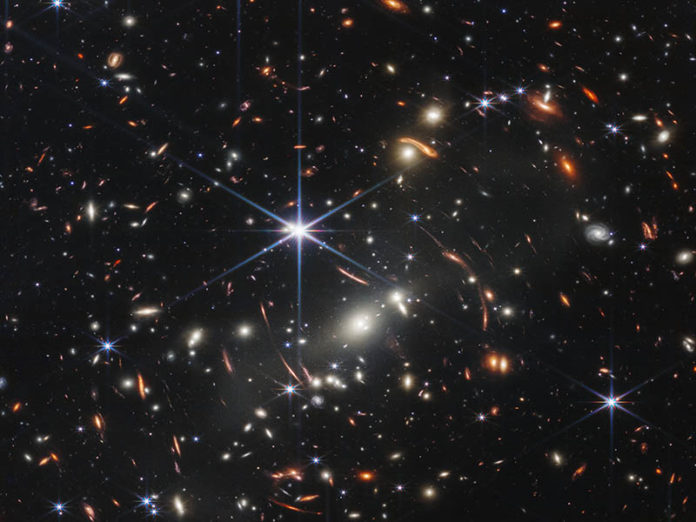Today, we are going to take a quick pause from our normal server and infrastructure coverage and just highlight the big technology news of today. Humanity launched a complex telescope into space and it snapped a photo. After many years to get to this point, the first image from the telescope was revealed.
NASA James Webb Space Telescope’s First Image Released
We are not going to give a history of the James Webb space telescope. Plenty of others have and have done a better job. Still, the images NASA shows of the machine are awesome.

After designing, building, and testing the instrument, packing it and getting it ready for launch, launching into space, and deploying the telescope, it is finally time to see something. Today we got the first public image from NASA using the new telescope:

The photo (you can see the official version here) shows thousands of galaxies in the SMACS 0723 galaxy cluster approximately 4.6 billion years ago. Although I have traveled roughly 2.5 million miles in my lifetime, that is nothing compared to how far light has traveled to reach the telescope.
Final Words
First off, the images from Hubble were probably some of the ones that led me toward doing anything in tech. Second, and the excellent segue to STH’s coverage area, this illustrates a trend that we are seeing in other areas closer to home. Behind every tech presentation’s “explosion of data” the big drivers are often higher resolution images (and video) as well as having more and higher resolution sensors. If you see the Hubble versus James Webb look at this area of the sky, you can quickly understand how much more data is being captured.
For today though, and with the official first set of images coming out on 2022-07-12, perhaps it is just worth it to take a moment and look at the sky in wonder at what is out there.





Thank you for posting this. Absolutely awesome engineering!
Visiting JPL I had a chance to discuss JWST engineering with some of them who designed and built it. Way behind schedule and over budget BUT there is NO prototype – THIS is it, has to work for 10-20 yrs in an unshielded env (no air / magnet field protection), and NO ONE can go there to service at Lagrange point. We need to support NASA and stop beating them up over costs etc!
Love that you posted this. Keep up the great work!
Absolutely horrible diffraction spikes, if not “the worst” I have ever seen produced from an “imaging” instrument, to worst than I had hoped, knowing somewhat in advance what to expect, having worked at Keck 1, to worked in R2 at Space Park (former TRW), being the lead designer for the NG testbed for NWO (twin spacecraft planet finding mission), to have my own small piece of the gold foil heat shield used for JWEST, personally knowing the then Program Manger at Northrop Grumman. For the total price to tax payer and over decade delay, a rip off produced by a cancerous EO/AA mindset. Relative to image quality, most any reflecting telescope (light bucket) of equal aperture, made over the past 80 years, if placed in space would perform better, actually be able to see small objects near a bright point source. Every review of the images, to public comments shared in media, coming from those not qualified to provide peer level critiques (many in the field of Astrophysics not even competent with optical instruments, not the least point a telescope at a galaxy without the use of a computer, to falsifying images “at will” like the team I caught last year cheating at Goddard removing M32 to publishing false star and galaxy background), and maybe what those at NASA are seeking. As for me, very likely to have used more telescopes of different types and aperture range, than all of the program mangers on WJEST combined. Park McGraw Former Member Technical Staff, Optics and Lasers Dept., LSPC, Northrop Grumman Space Park, NASA Fellow, First to Collect Ground Base Image of Cyclone on Mars, USAF 0.6m Planetary Patrol Telescope, Mauna Kea Hawai`i (Concurrent Hubble Space Telescope), Have Observed (no GoTo) >400 Astronomical Objects, Independent Discover Comet 1983 VII (First in North America, Confirmed Harvard Smithsonian Astrophysical Observatory).
For the next space telescope, I would like to lead a team that spin cast a 20m mirror in space.
The primary mirror cell assembled by robots from segments, then melting a thin layer surface.